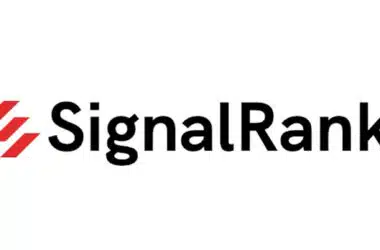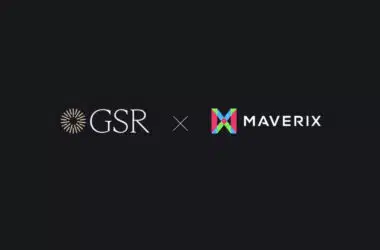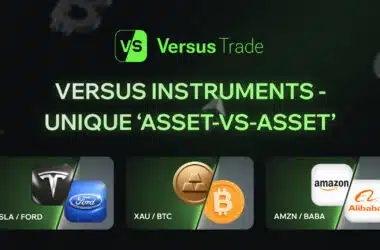Table of Contents
How Fintechs are Disrupting Traditional Banking?
The global financial crisis of 2008 exposed the flaws of the conventional banking and financial system and these flaws resulted in the rise of fintech in the post-recession world. Before we move on to discuss how fintech is disrupting traditional banking, let us quickly look at some of the major flaws of the conventional banking system and then we will see how the rise of fintech has not only challenged conventional banking but created a transformation in the market.
Problems with the conventional banking system | How Fintechs are Disrupting Traditional Banking?
Conventional banking prior to the global financial crisis of 2008 was and still is marred with problems that resulted in the crisis in the first place. Corrective legislation was done after the crisis but still some of the problems are inherent to the system and thus even corrective legislation has not been able to address these problems.
From the end consumers point of view, the biggest drawbacks of conventional banking are:
- Delays in transaction processing
- Working hours
- Effect of inflation on savings
- Lack of investment opportunities
- Inaccessibility to financial services
So for instance, if you put in a cheque for clearance, it usually takes 24 – 48 hours to clear. It makes absolutely no sense that in the era of 4G and 5G connectivity, a simple cheque takes up to 48 hours to clear. In addition to this, any mistake on the check can result in the check being cancelled.
Similarly, while banks usually have 24/7 customer services, their working hours are limited to 9-5. This means that the moment the working hours end, financial institutions stop processing the payments and transactions. Take stock markets for instance. Events that impact the stock market can happen at any time of the day but you can only trade during working hours. In addition to this, there are geographical barriers. A person in Asia for instance cannot easily invest in Wall Street because the amount of security deposit for foreign investors is higher than it is for local investors. The same applies to almost every stock market.
Another major issue that directly affects the end consumers is the lack of investment products. Interest rates are globally at an all-time low right now. Banks in many countries are offering rates between 1% and 2% whereas inflation rates are between 1% and 5% in many countries. What this means is that if you keep your savings in the bank and earn interest at 2%, the effect of 4% inflation is going to make you end up with a net loss of 2%. In other words, instead of growing your savings will erode over time.
This is just the tip of the iceberg. There are a lot of other issues with conventional banking. For instance, the US Senate inquiry report on the reasons for the financial crisis outlined that banks like JP Morgan and Lehman Brothers knew about the unfolding crisis. Traders named in the report knew that the subprime mortgage crisis was going to hit the market and thus they made billions by shorting the derivative products.
This makes the conventional banking system extremely flawed. This is not just conjecture, all of the flaws and drawbacks mentioned above are well-documented facts. It was because of these drawbacks that the post-2008 financial crisis world saw the rise of fintech. However, at this point, it will be unfair to miss out on the role of the smartphone revolution in the rise of fintech because smartphone app development became a very important delivery mechanism for many fintech products and services.
Rise of Fintech | How Fintechs are Disrupting Traditional Banking?
“Fintech” refers to financial technology and in simple terms, fintech refers to the use of technology to deliver financial products and services. Fintech in its very rudimentary form began back in the 90s with financial services like PayPal allowing users to carry out transactions online.
However, it was the financial crash of 2008 and the rise of smartphone applications that led to the fintech revolution. The introduction of blockchain and bitcoin was the first pebble. At this point, it is important to understand that blockchain is a significant driver of fintech but fintech is not just limited to the blockchain.
The last decade, in particular, was focused on solutions that were not based on blockchain however the pandemic triggered an increase in the adoption of blockchain-based solutions.
The post-financial crisis world was a disillusioned world and out of that disillusionment came fintech solutions that directly competed with conventional banking products and services. While a conventional bank offers saving and lending, fintech solutions go for a more decentralized approach. There are applications that offer saving solutions, applications like Acorns that allow users to not only save but also micro invest their savings.
Similarly, there are applications that provide credit to consumers, thus taking over the lending function of the banks. Afterpay, an Australia based app that allows users to buy goods online, in four easy instalments without being charged interest.
Entrants in the fintech sector offer targeted services, this allows them to provide services that are of higher quality than those of conventional banks. Online banks for instance are growing in number, the pandemic, in particular, has propelled the growth of fully online banks. These fully online digital banks offer better rates to their clients because they do not have the administrative costs that the traditional brick and mortar banks have.
According to a PWC report of 2016, almost 70% of the banks reported a loss of market share to fintech solutions. These banks also reported increased pressure on their margins due to the competition being given by the fintech solutions.
This shows that conventional banks are not only losing market share but also their utility.
Why should a person invest their savings in a bank when they can easily download an application, that lets them mimic high performing portfolios and earn a return that is higher than the rate the banks are paying?
Core Banking Mechanism | How Fintechs are Disrupting Traditional Banking?
Banks are not only facing disruption from fintech in the areas of traditional financial products and services. They are also being forced to rethink their core banking mechanisms. Core banking mechanisms are simply the back end system that processes and updates the transactions across the various branches of a bank.
Fintech solutions allow consumers 24/7 access to their data and quick processing. Core banking mechanisms are at this point at least three to four decades old and thus not able to keep up with the requirements of the modern consumer. Banks are thus forced to rethink their core mechanisms and update them, to keep up with the changing times.
Blockchain – Artificial Intelligence – Machine Learning | How Fintechs are Disrupting Traditional Banking?
If the last decade was disruptive then the next one is going to be even more disruptive because now we have got the combination of blockchain, artificial intelligence and machine learning providing us products and services that are establishing a very viable alternative to the conventional banking system. Decentralized Finance(DeFi) is a concept that not only decentralises finance, thus ending the need for conventional banks but also allows the creation of new financial products and services as add ons.
Fintech has thus given us a solution to every drawback and the inherent problem of the conventional banking system. These solutions have created disruption in the market and as blockchain-based solutions go towards mass adoption, the conventional banking sector is going to experience a transformative phase where blockchain-based fintech will become the norm.
Is it the first time you’ve heard about Fintechs and their impact? Already using any of them? Have a look at our Fintechs reviews here.















Recent Comments